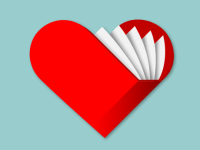The Importance of a Classroom Library
I believe that a classroom library is the heartbeat of a teacher's environment. It is the window into an educator's own personality, and it reflects the importance of literacy in the classroom. I believe that every teacher -- no matter what subject he or she teaches -- should have one.
The Categories of Book Hunters
We should provide access to books in our classes with the same differentiated approach that we bring to any other lesson, assessment, or activity because there are, I believe, four categories of students who pursue books.
1. The Book Stalker
These are students who will seek out the book they want, regardless of locale. They get a mere whiff of a good book in the air, and they pursue it. They understand how to choose books and seek out advice when they need it.
2. The Library Literate
These are students who won't or can't go to a store, but who are comfortable enough to go to the local library, perhaps seeking advice from the friendly face on the other side of the desk.
3. The Lunchtime Lurker
These are the students who may be comfortable only at the school library. This may also be the only place where they feel safe. Perhaps they escape lunchtime trauma by diving into the dark corners of the library's stacks, surrounded by countless books and those "READ" posters.
4. The Frightened Bibliophobe
And then there are students who are so frightened of books, of literacy, and of choice, that they feel comfortable only in their classroom library, reaching for books they know exactly where to find -- and trusting you, who understands their fears and reading insecurities.
And it's up to us -- the classroom teachers -- to attract all these students, like moths to a flame. My stacks have every genre and every level: picture books, chapter books, fiction, and nonfiction.
Lure Them Into Your Classroom Library Through Any Means Necessary
My shelves are also peppered with realia from my own background, giving life and texture to the look of the library. A Shakespeare action figure with a removable quill sits between a full-text edition of A Midsummer Night's Dream and the manga version of As You Like It. My childhood Clash of the Titans lunchbox bookends the fantasy section, and a knight rides among the historical-fiction section. A figurehead of Captain Morgan that hung in my room all through high school glares down at a sign that reads, "Any who dare not use the proper means of checking out a book." They're all there. Each little tchotchke has a purpose. Each helps entrap students in the web of literacy that is my classroom library.
When interest tapers off, I start classroom-library scavenger hunts with questions on the board such as the following:
- Which book has a map of Guilder inside its front cover? (The Princess Bride)
- Which author has written books in each of the genres in our library? (Avi)
- Which book on Mrs. Wolpert's fantasy shelf inspired the book Peter and the Starcatchers? (Peter Pan)
- What is the title of the biography about that fantasy book's author? (J.M. Barrie and the Lost Boys)
- How many books in Mrs. Wolpert's library have been written by author Mike Lupica? (4)
I have stickers on every book with icons representing each genre to help categorize the books correctly. That way, even a struggling student can select and return books correctly. When I inject new books into the stacks, either through my own purchases or donations, I select volunteers to decide which stickers to place on them, thus turning a chore into a mini-lesson all in one fell swoop.
Ripley's Believe It or Not has a sticker stating that this book is for classroom reading only (too many kids want to read it after finishing their work), and Diary of a Wimpy Kid has a seven-day-limit sticker on its spine.
Make Your Classroom Library a Part of Your Lessons
Weave your classroom library into your lessons, and make sure that it is an interactive part of your classroom.
- Have the students pull golden lines from the books for a homework assignment.
- Have them design persuasive ads and write reviews inviting other students to read a book that they may have loved. It doesn't matter the genre -- any class can be uplifted with related book reviews hanging from the shelves. Imagine a science classroom with a review of A Wrinkle in Time hanging in front of a copy of the displayed book. Imagine a math classroom with a review of Flatland or Math Curse luring in those readers. Imagine a review of Beware, Princess Elizabeth or a Dear America book highlighting the choices students have made in a history classroom.
- Have students recreate book covers once they are done reading a book. As students submit them, hang these book covers on the walls to become a part of the classroom's costume. These art pieces will overwhelm the room as proof of your students' content-area literacy.
One day, the books may fall apart with use, but remember that there's no better death for a book than its having been read too much and by too many.
What are some of the creative strategies and lessons that you use to motivate students and inspire independent reading?
